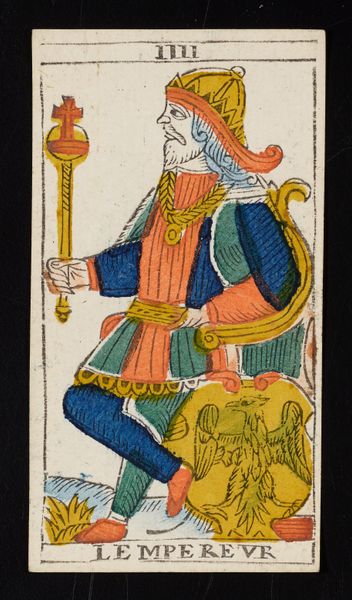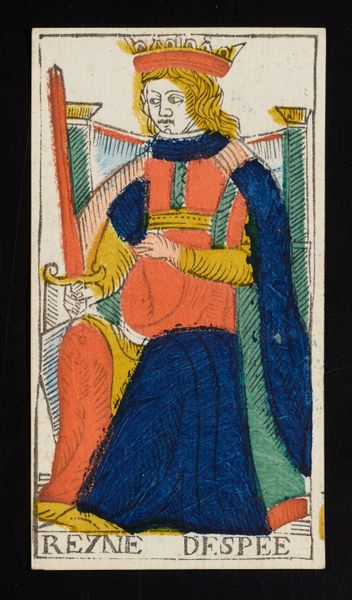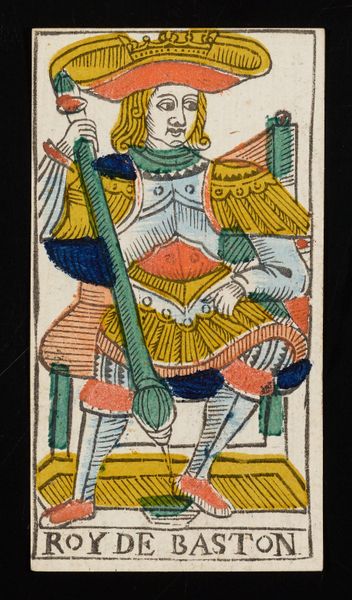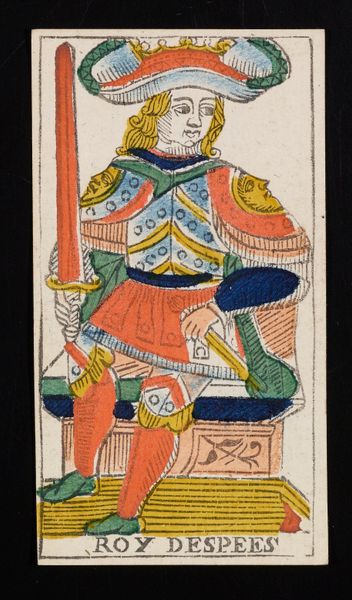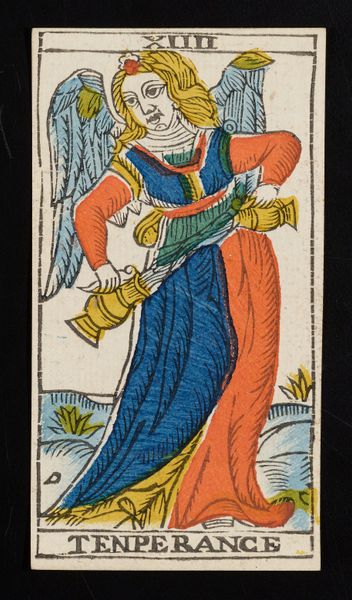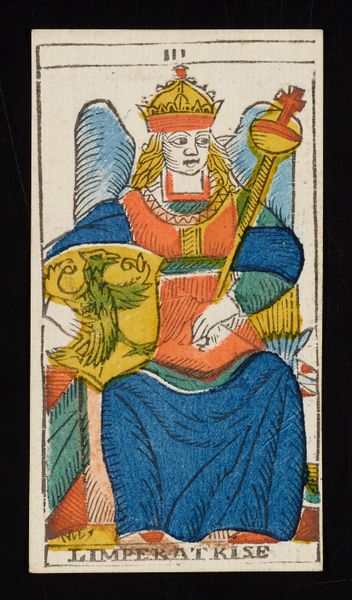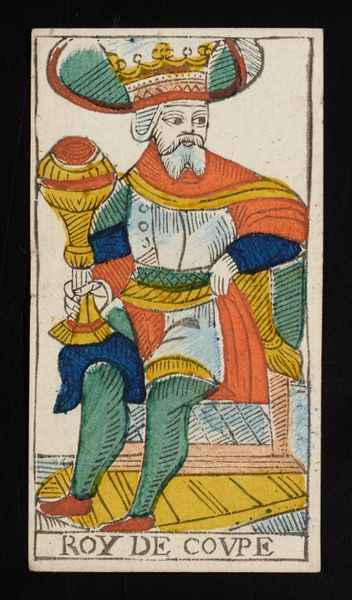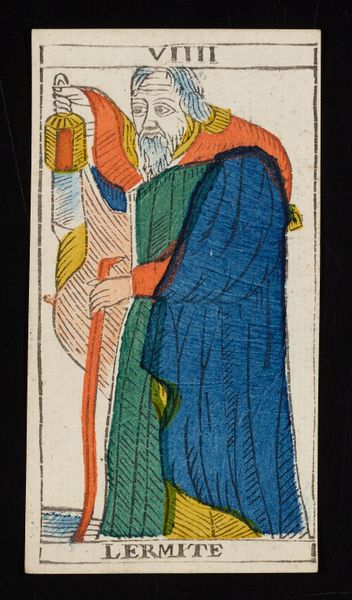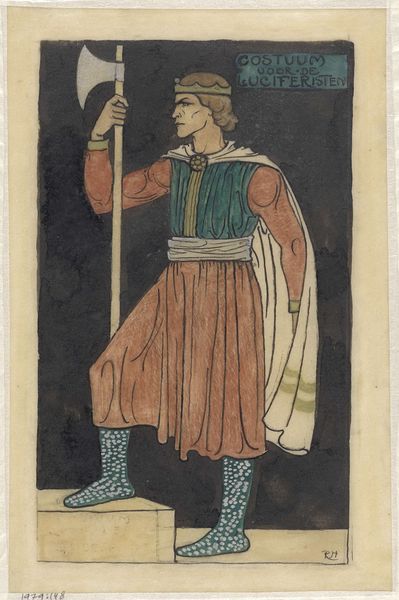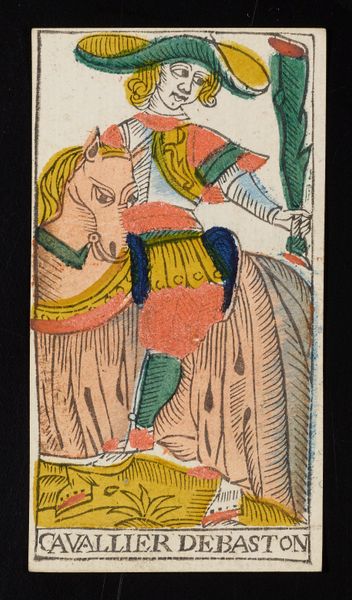
print, etching, intaglio
#
portrait
# print
#
etching
#
intaglio
#
linocut print
#
rococo
Dimensions: 4 7/16 x 2 7/16 in. (11.27 x 6.19 cm) (image, sheet)4 5/8 x 2 1/2 in. (11.75 x 6.35 cm) (sheet, each)
Copyright: Public Domain
This is the Queen of Batons card, made by Claude Burdel in the 18th century. It is made with ink on laid paper, and is an early example of industrialized printmaking, a process known as woodcut. The image is hand-colored, the artisan coloring each card with a set range of hues. The blocky printing and application of color gives the card its distinctive character. The flat and linear design of the queen, combined with the texture of the laid paper, gives a tactile quality to the image. You can almost feel the pressure of the woodblock on the paper, and see the hand of the worker who applied the color. As demand for playing cards grew, craftspeople explored methods of mass production. The woodcut printmaking and use of stencils to apply color allowed for faster reproduction, but it also required the division of labor. Each worker becoming responsible for a single part of the card's production, a key marker of the shift from handcraft to industrial manufacturing. This card reminds us that even seemingly simple objects have a rich history of making, and that the materials and processes used to create them are deeply intertwined with wider social and economic changes.
Comments
No comments
Be the first to comment and join the conversation on the ultimate creative platform.
